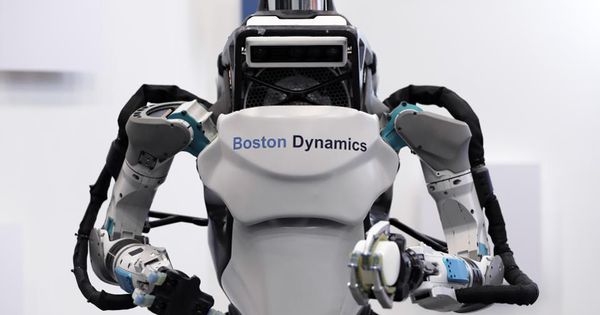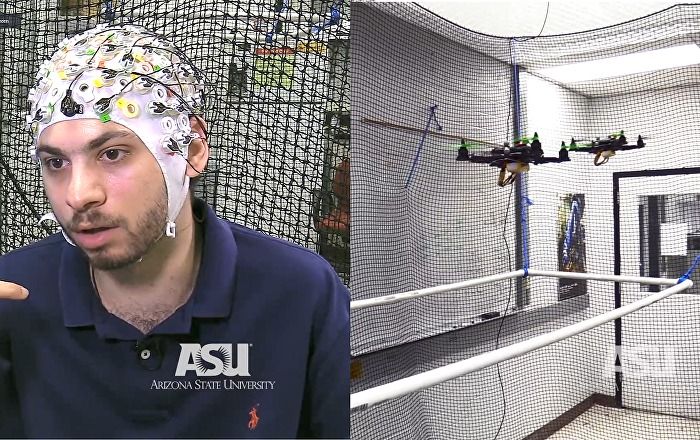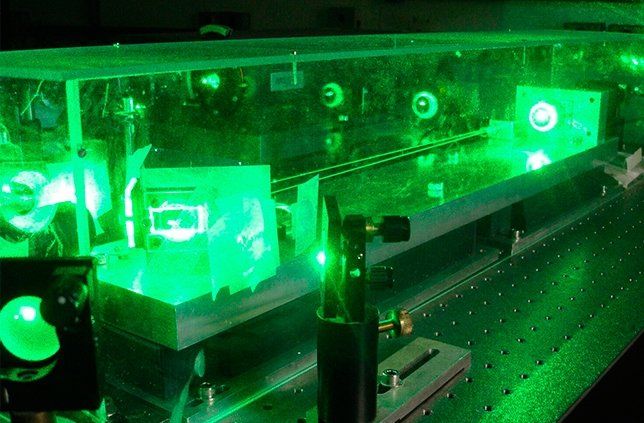Page 9524
Sep 8, 2018
This transcription of a discussion on Christian Transhumanism FB clarifies that their founder (Revd Benek) is trying to SUBVERT the trans/ posthuman movement, and what he/ they mean by “Transhuman” is not FM-2030’s notion of evolution from human via transitional stage to posthuman, but is set AGAINST progress and wishes to retain the human condition, and convert everybody to Jesus-worship if they can
Posted by Steve Nichols in categories: evolution, transhumanism
Christopher Benek “There is not a square inch in the whole domain of our human existence over which Christ, who is Sovereign over all, does not cry, Mine!” — Abraham Kuyper Christopher Benek Steve Nichols May I ask then — why are you in this group? Steve Nichols “There is not a square inch in the whole domain of our human existence over which Christ, who is Sovereign over all, does not cry, Mine!” I suspect Christian transhumanists of trying to infiltrate and subvert the wider radical futurist movement (evidenced by such quotes as above). I am here to provide balance and sanity. Christopher Benek Why Steve you don’t need to suspect it — I’ll affirm it. As a matter of fact it is part of the reason why I co-founded the CTA — to reclaim and redeem that which was what was falsely appropriated to begin with, that which is all of humanity’s divine vocation — not just as some “radical” group’s road to isolationist technological tyranny. In fairness though, I don’t think that Micah or I have ever denied that fact. And hey we welcome any accountability that you want to provide as long as that goes both ways. In short all we ask is that folks here genuinely and lovingly seek to play nice with others. Steve Nichols Christopher Benek having been involved with trans /posthuman movement since the 1980’s, Christians have hardly featured other than times such as when the Pope (no less) and other vocal Christians have condemned trans/ posthumans. You can hardly “reclaim” that of which Christianity was never a part, and in fact has mostly been (and remains on the whole) in opposition to. Since you welcome accountability, what authority do you have (other than tall tales in the bible) to claim determination of “all of humanity’s divine vocation”? I appreciate that I am a guest here, and always try to be polite. Christopher Benek Steve Nichols See assumptions on terminology is where we differ — I have contended — for quite some time now — “that the “trans” part of transhumanim doesn’t mean “post” but instead “across — the scope of what it might mean to be made human” which i think we are on the very front end of understanding. In that regard — all of the historic parts of the church — particularly those elements that were missionary in origin were taking, creating and using tech to help people throughout the world. In fact, the “tall tales” as you put it of the Bible (which by the way obviously weren’t written to be taken literally in all places — when Jesus says “I am the door” he doesn’t mean that literally) constantly talks about how God was instructing humans how to fashion and use tech to protect and improve relationships. I think that is a good guidepost for our future as well. Tech is deep in Christian history and its only since the false narratives of the like of the “New Atheists” (as if an actual atheist even exists) that anyone has questioned that… Yes, Christians don’t put tech (or anything) before God — but that doesn’t mean we don’t acknowledge its crucial importance as a hermeneutical and practical device for understanding and actually being human.” Since Benek reposts copies of his own discussions with Zoltan (and maybe others) on CTA list, he can have no objections to me reproducing his comments here.
Sep 8, 2018
A 50-year-old NASA invention that could kill cancer
Posted by Michael Lance in categories: biotech/medical, innovation
Sep 8, 2018
DARPA Plans To Spend $2 Billion Developing New AI Technologies
Posted by Derick Lee in categories: innovation, robotics/AI
The United States Defense Advanced Research Projects Agency (DARPA) has announced that it plans to spend $2 billion on developing new artificial intelligence (AI) technologies as part of a campaign called “AI Next”. The money will be used to fund new and existing research programs at DARPA.
The US Department of Defense’s innovation agency is focusing on pushing beyond second-wave machine learning techniques towards contextual reasoning capabilities.
Renowned researchers, educators and makers, pioneering bridge building methods, development and inspiration for Interstellar Flight.
Sep 7, 2018
SpaceX and Tesla CEO Elon Musk teases major Neuralink update “in a few months”
Posted by Klaus Baldauf in categories: Elon Musk, robotics/AI
In a several-hour live interview on September 6–7, Tesla and SpaceX CEO Elon Musk managed to slip in a few words about Neuralink, a side-project company formed by Musk for the purpose of bridging the gap between potential superhuman AI and the human brain itself.
Although the eccentric CEO/CTO wouldn’t say much more, he did tease a potentially revolutionary update from the fully-stealthed startup “in a few months”.
Sep 7, 2018
DARPA’s New Brain Chip Enables Telepathic Control of Drone Swarms
Posted by Genevieve Klien in categories: computing, drones, military, neuroscience
The US military’s Defense Advanced Research Projects Agency (DARPA) has created a brain-computer interface that enables a person to control everything from a swarm of drones to an advanced fighter jet using nothing but their thoughts and a special brain chip.
Life imitates art, in defense tech no less than in society. In the 1982 techno-thriller film “Firefox,” Clint Eastwood steals a fictional Soviet fighter jet called the “MiG-31 Firefox,” a Mach 6-capable stealth fighter he piloted with his thoughts. But now in 2018, the US military has gone even further: you can control a whole group of drones or fighter jets with your thoughts.

Continue reading “DARPA’s New Brain Chip Enables Telepathic Control of Drone Swarms” »
Sep 7, 2018
Experiment obtains entanglement of six light waves with a single laser
Posted by Genevieve Klien in categories: particle physics, quantum physics
Austrian physicist Erwin Schrödinger (1887−1961), one of the giants of contemporary science, considered entanglement the most interesting property in quantum mechanics. In his view, it was this phenomenon that truly distinguished the quantum world from the classical world. Entanglement occurs when groups of particles or waves are created or interact in such a way that the quantum state of each particle or wave cannot be described independently of the others, however far apart they are. Experiments performed at the University of São Paulo’s Physics Institute (IF-USP) in Brazil have succeeded in entangling six light waves generated by a simple laser light source known as an optical parametric oscillator.
Articles about these experiments have been published in Physical Review Letters and Physical Review A. The experiments are highlighted in a special news feature posted online.
“Our platform is capable of generating a massive entanglement of many optical modes with different but well-defined frequencies, as if connecting the nodes of a large network. The quantum states thus produced can be controlled by a single parameter: the power of the external laser that pumps the system,” said Marcelo Martinelli, one of the coordinators of the experiments. Martinelli is a professor at IF-USP and the principal investigator for the project.
Sep 7, 2018
Quantum cryptography: A foolproof method of preserving data security
Posted by Genevieve Klien in categories: economics, encryption, quantum physics, security, sustainability
Investment in clean energy is rising as improved economics and energy storage, better regulation, and concerns about air pollution drive the creation of innovative new solutions.
Sep 7, 2018
Japan preps first test for its awesome ‘space elevator’
Posted by Shailesh Prasad in category: space travel
Japan is preparing to carry out the first test in space for a so-called “space elevator” that could one day transport people and cargo to orbiting stations way above Earth. Several organizations are looking into the feasibility of the project, with one group aiming for an ambitious-sounding 2050 launch.


















